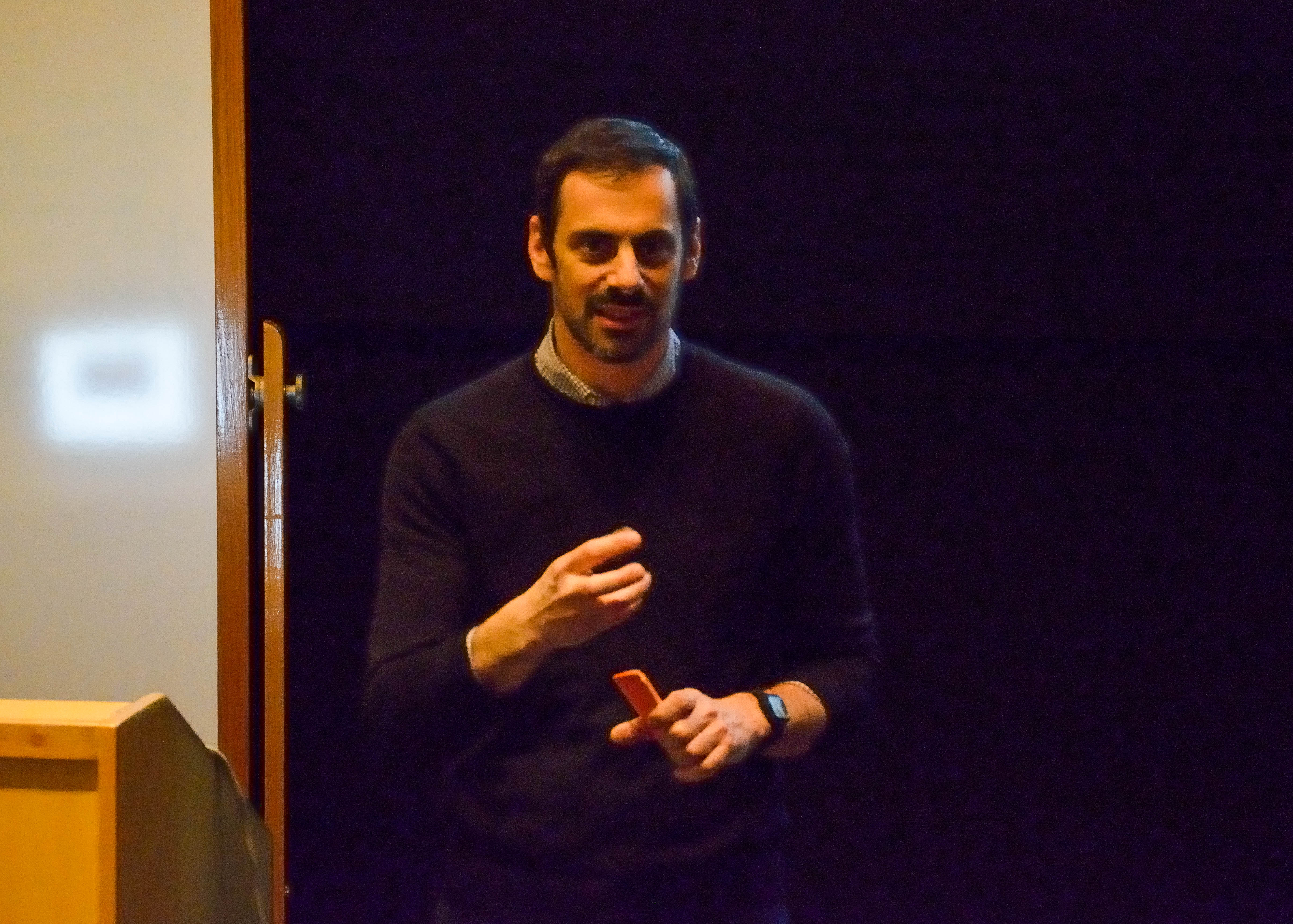
Sonya Sternlieb, Staff Photographer
On Tuesday, March 24, in the Powell Family Cinema, producer, director, and cinematographer David Shadrack Smith ’92, discussed his recent project “Belief,” which he executively produced alongside Oprah Winfrey. He spoke specifically about how the series led him to explore his individual identity.
Smith has created and produced over 150 hours of programming and founded the Part2 production company in 2007. He also lived in China as a TV and film journalist making documentaries on the side. His work on projects such as “National Geographic’s Most Incredible Photos” and “This is Life with Lisa Ling” has earned him two Emmy nominations among many other achievements.
Smith explained that “Belief” seeks to tackle some very fundamental human questions such as “What is the core of human yearning? What have we been looking for since the beginning of humankind? What are the universal things that unite us rather than divide us?”
He recalled pitching “Belief” to Oprah, the narrator of the series. After showing a six-minute clip of footage, Oprah responded by asking, “What do you believe?” Smith was flummoxed and realized he never had confronted the question for himself.
Smith’s response must have been effective, because the series received the green light and he proceeded to travel around the world for three years to film it. From the Holi festival in India to Burning Man in Nevada, the show aims to capture our collective, and uniquely human, search for a connection with something greater than ourselves. In the process Smith reflected on his own life and what gave him a sense of meaning and belonging.
“His presentation was inspiring not just because of how filmmaking helped him rediscover his Jewish roots, but because his production of ‘Belief’ brought poignant stories from around the world to life,” Justin Kim ’19 said.
The event was hosted by Chabad at Wesleyan, a Jewish outreach organization that promotes social, educational, recreational, and religious programming for students and faculty, in partnership with the College of Film and the Moving Image.
“I saw an article about David discussing the film and how it made an impact on him in terms of his beliefs and traditions and making a conscious decision to reclaim his belief,” said Rabbi Levi Schectman, the advisor for Chabad at Wesleyan.
Rabbi Schectman mentioned the article and the possibility of getting Smith to speak at Wesleyan to Vera Schwarcz, a retired University professor. Schwarcz happened to have had Smith as her student in an East Asian Studies class, the department Smith majored in, and convinced him to come speak at Wesleyan.
“Vera was my mentor and taught me so much about how to think about stories and history and ways of thinking,” Smith said. “I’ve taken that with me whenever I’ve gone. Out of Wesleyan I got my curiosity, I got my sense that there are different ways to approach life, and a little bit of fearlessness about going forward.”
Throughout the presentation, Smith showed clips from the series. From a Hasidic Bar Mitzvah in Budapest, to an aboriginal spiritual leader trekking with his grandson, all of the striking stories and elaborate cinematography seemed to have left an impression on the audience.
President of Chabad at Wesleyan Matthew Renetzky ’18 noted that learning about Smith’s personal experience enhanced his viewing of the documentary.
“Whether or not people believe in anything, I think the idea of believing in faith is something that emotionally affects people a lot,” Renetzky said. “It really is documentary in the sense that it’s documenting the human condition, but [also] how he had a personal experience and how he reconnected with his faith and his identity in the process, and then spread the word the best he could,” he said.
Before concluding with a question and answer session, Smith wrapped up the presentation by showing a clip of the show’s conclusion. Breathtaking images from all seven episodes flash as Oprah’s sonorous voice closes the series with a question quite familiar to Smith: “What do you believe?”